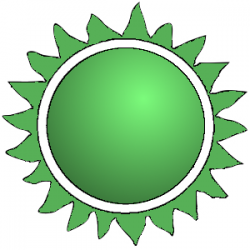Azhanti
| Azhanti | |||||||||||||||||||||||||
|---|---|---|---|---|---|---|---|---|---|---|---|---|---|---|---|---|---|---|---|---|---|---|---|---|---|
 Homo sapiens iralianis or Homo azhanti | |||||||||||||||||||||||||
| Base Information | |||||||||||||||||||||||||
| Classification | Omnivore/gatherer | ||||||||||||||||||||||||
| Status | Minor Human Race | ||||||||||||||||||||||||
| Locomotion | Walker | ||||||||||||||||||||||||
| Terrain | Plains | ||||||||||||||||||||||||
| Body Form | |||||||||||||||||||||||||
| Confluence | Humanoid | ||||||||||||||||||||||||
| Bio-Identenoid | Human | ||||||||||||||||||||||||
| Size | 1.75 meters | ||||||||||||||||||||||||
| Weight | 60 kg | ||||||||||||||||||||||||
| Culture | |||||||||||||||||||||||||
| Languages | Anglic, Rakhli | ||||||||||||||||||||||||
| Social Structure | |||||||||||||||||||||||||
| Technological Epoch | TL:10-12 | ||||||||||||||||||||||||
| Psionic potential | Standard | ||||||||||||||||||||||||
| Origin World | |||||||||||||||||||||||||
| Homeworld location | Irale (Antares 2315) | ||||||||||||||||||||||||
| UWP | B898998-B
| ||||||||||||||||||||||||
| Primary Star | F9 V | ||||||||||||||||||||||||
| Atmosphere | Dense (tainted) | ||||||||||||||||||||||||
| Off-world presence | Yes | ||||||||||||||||||||||||
| Zoetic individuals | Yes | ||||||||||||||||||||||||
| Source | |||||||||||||||||||||||||
| Reference | Humaniti 24-29. | ||||||||||||||||||||||||
| Canon | Yes | ||||||||||||||||||||||||
| Also see | |||||||||||||||||||||||||
The Azhanti of Irale (Antares 2315) are a Minor Human Race and are technologically sophisticated sophonts.
Physiology & Environment[edit]
The Azhanti are not truly interfertile with most other Human races. Consequently, physiological descriptions of "pure" Azhanti are more easily obtained than for other Humans.
Unlike many minor Human races, which differ from the physiological norms of baseline Humaniti only in minor ways, the Azhanti have been adapted to survive in high temperatures. Thus, the Azhanti distinguish themselves from the rest of Humaniti physically as well as culturally.
An Azhanti male averages about 5' 9" tall in height and weighs approximately 140 lbs. An Azhanti female averages about 5' 8" tall and weighs 135 lbs. This weight is somewhat less than Human norms and appears to have evolved to help the Azhanti radiate excess heat. While they are of comparable heights to baseline Humans, they are thinner than that height would suggest. In addition, they are completely hairless and possess oversized ears. The cranium is likewise larger (approximately 1600-2000 cc), but Azhanti brains are less organized so that intelligence does not differ markedly from that of other Humans. Azhanti eyes are brown and, most strikingly, their skin is brownish-orange.
Blood types include P, Q, R and S. P and Q are most common.
Diet[edit]
Like most Humans, the Azhanti are omnivorous. The native life of Irale is compatible with Human biochemistry, so no extensive food preparation was necessary as it was among the Vilani.
Reproduction[edit]
Azhanti women give birth after a ten-month gestation period. Multiple births are nearly unknown.
Imperial scientists have difficulty deciding how to classify the Azhanti, as they are somewhat interfertile with other branches of Humaniti, but mixed pregnancies are difficult and highly prone to miscarriage, while most half-Azhanti children are born sterile. As a result, some biologists classify the Azhanti as a Human subspecies, Homo sapiens iralensis, while others consider them a hominid but non-Human species, Homo azhanti.
Senses[edit]
Azhanti senses are about equal to those possessed by most Humans. Azhanti eyes, however, are slightly better able to endure bright light due to the intensity of Irale's home sun. In addition to the distinctions already mentioned, the Azhanti differ from other humans in that their trachea possesses a special filter to allow them to breathe Irale’s sulfur-tainted atmosphere. Besides protecting them from the sulfur, the filter gives most Azhanti (including females) deep and raspy voices.
Lifespan[edit]
Azhanti life spans are somewhat short for members of Humaniti. Most Azhanti live to between sixty-five and seventy-five years. Likewise, most Azhanti do not age well, suffering the ill effects of old age before reaching fifty. Anagathic treatments can offset this somewhat, but few Azhanti approve of such methods, believing them an effort to "cheat" the time allotted to them by their God to overcome the challenges that the deity has placed before them.
Mentality[edit]
Azhanti are known for their impulsiveness. They tend to act on their passions, and their culture has developed extensive codes of conduct and honour to permit social stability.
Though they have a reputation as a dour people (when not rashly acting on impulse), Azhanti are actually fond of jokes, though their humour tends to take the form of riddles and cryptic puns. They are also noted for music, particularly the battle hymns that have become popular throughout the Domain of Antares.
Patriotism is an important value to Azhanti. The Azhanti version of patriotism leans heavily on military discipline and loyalty to a military leader. All Azhanti political institutions above the clan level are along military lines. Since Irale was opened to interstellar contact, the Azhanti have provided a disproportionate number of recruits for Antarean military units. The structure of the Imperium, with its Emperor and hierarchy of nobles, suits the Azhanti quite well.
Linguistics[edit]
See: Rakhli
History & Background (Dossier)[edit]
Calendar & Timekeeping[edit]
The natural Azhanti circadian rhythm is that of a twenty-six hour day. The local day on Irale is 25 hours and 39 minutes. This day is divided into a nine-hour work period, an eight-hour period of rest, and another nine-hour period of sleep. Given the close correspondence between Irale’s local day and the standard Imperial twenty-four hour day, most Azhanti have little trouble adapting to it.
Astrography[edit]
This race is primarily located in the following areas:
Homeworld[edit]
The homeworld of this race is:
World Listing: 1105[edit]
Significant communities of this race are known to exist within the following systems and worlds:
References & Contributors (Sources)[edit]
- Paul Drye. "The Azhanti." Coreward 2 (1991): 3-5.
- James Maliszewski. "The Azhanti". JTAS Online published September 4, 2000 (2000)
- Loren Wiseman, Jon F. Zeigler. Humaniti (Steve Jackson Games, 2003), 24-29.